When Form Deceives Content. A Critical Look at Olga Bubich’s Project Memory Landscapes
When Form Deceives Content. A Critical Look at Olga Bubich’s Project Memory Landscapes
Critique | 08.09.2025
In recent years, visual artists have increasingly turned to the theme of memory as a political field. This theme demands clarity, methodological precision, and responsibility in form. On the international art scene, numerous projects can be found that employ various approaches—from documentary practices and engagement with archives to subtle visual interpretations. It is within this context that Belarusian artist and memory researcher Olga Bubich presents her project, Memory Landscapes (2022–2025), dedicated to the visual exploration of trauma and collective memory through the lens of nature.
In recent years, visual artists have increasingly turned to the theme of memory as a political field. This theme demands clarity, methodological precision, and responsibility in form. On the international art scene, numerous projects can be found that employ various approaches—from documentary practices and engagement with archives to subtle visual interpretations. It is within this context that Belarusian artist and memory researcher Olga Bubich presents her project, Memory Landscapes (2022–2025), dedicated to the visual exploration of trauma and collective memory through the lens of nature.
SHARE:
SHARE:
Send us a project for review!
Every reader can send their project (or another artist's project) for critical review by Chryslais Mag. To do this, collect relevant information about the work of art or active links mentioning the work and send it to the appropriate section email address — chrysalis.critique@gmail.com
Send us a project for review!
Every reader can send their project (or another artist's project) for critical review by Chryslais Mag. To do this, collect relevant information about the work of art or active links mentioning the work and send it to the appropriate section email address — chrysalis.critique@gmail.com
What is the project about?
Olga Bubich’s Memory Landscapes reflects on how natural landscapes—trees, soil, roots, stones—become silent witnesses to the tragic events of the 20th century. Bubich visits memorial sites across Europe, including former concentration camps (Auschwitz, Dachau, Mauthausen) and forests in Belarus and Poland where mass shootings took place, and makes instant Instax photographs. In her images, she captures fragments of nature (a tree trunk, a stone, moss, soil), which, in her interpretation, act as symbolic carriers of memory. She then creates hand-printed monotypes inspired by these photographs and records short videos of concentration camp architecture on her phone. The visual part of the project is complemented by an authorial research essay.
What is the project about?
Olga Bubich’s Memory Landscapes reflects on how natural landscapes—trees, soil, roots, stones—become silent witnesses to the tragic events of the 20th century. Bubich visits memorial sites across Europe, including former concentration camps (Auschwitz, Dachau, Mauthausen) and forests in Belarus and Poland where mass shootings took place, and makes instant Instax photographs. In her images, she captures fragments of nature (a tree trunk, a stone, moss, soil), which, in her interpretation, act as symbolic carriers of memory. She then creates hand-printed monotypes inspired by these photographs and records short videos of concentration camp architecture on her phone. The visual part of the project is complemented by an authorial research essay.
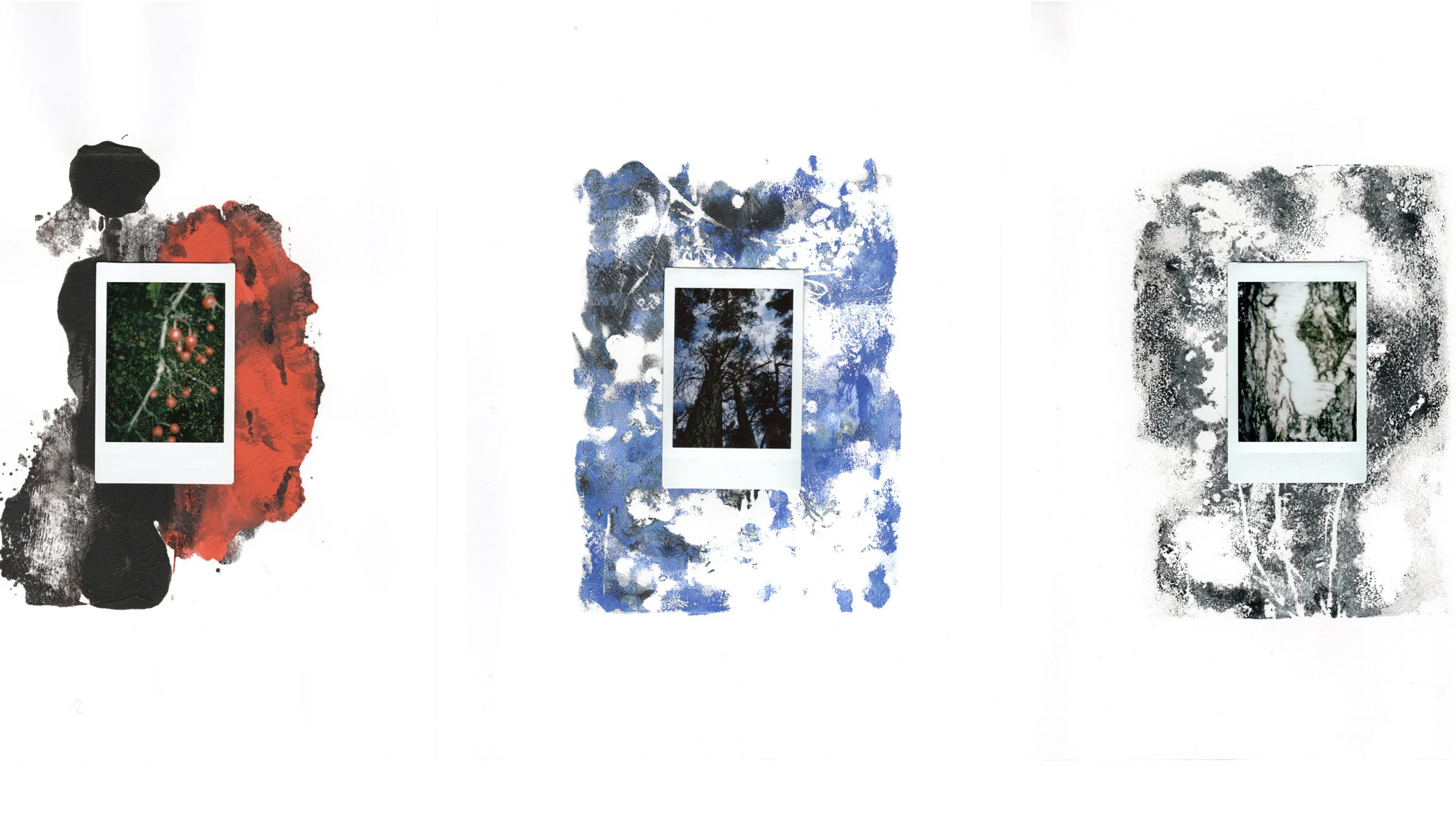
Part of Olga Bubich's photographs from the "Memory Landscapes" project / instant Instax photos and monotypes / screenshot from the artist's website / 2022-2025
Nature is silent
The central idea of the project is that “nature remembers.” The artist captures the landscapes of these sites using an Instax camera: stones, trees, bark, and grass. Preserved in instant prints, nature becomes for Bubich a testimony of the capacity to remember—a bearer of historical trauma. Yet neither the visual component nor the accompanying text explains how exactly it remembers. The photographs are not annotated: they lack dates, coordinates, or hints of interaction with the actual site that would help establish a connection between place and context—as, for example, in Anton Kusters’ The Blue Skies Project.
Nature is silent
The central idea of the project is that “nature remembers.” The artist captures the landscapes of these sites using an Instax camera: stones, trees, bark, and grass. Preserved in instant prints, nature becomes for Bubich a testimony of the capacity to remember—a bearer of historical trauma. Yet neither the visual component nor the accompanying text explains how exactly it remembers. The photographs are not annotated: they lack dates, coordinates, or hints of interaction with the actual site that would help establish a connection between place and context—as, for example, in Anton Kusters’ The Blue Skies Project.
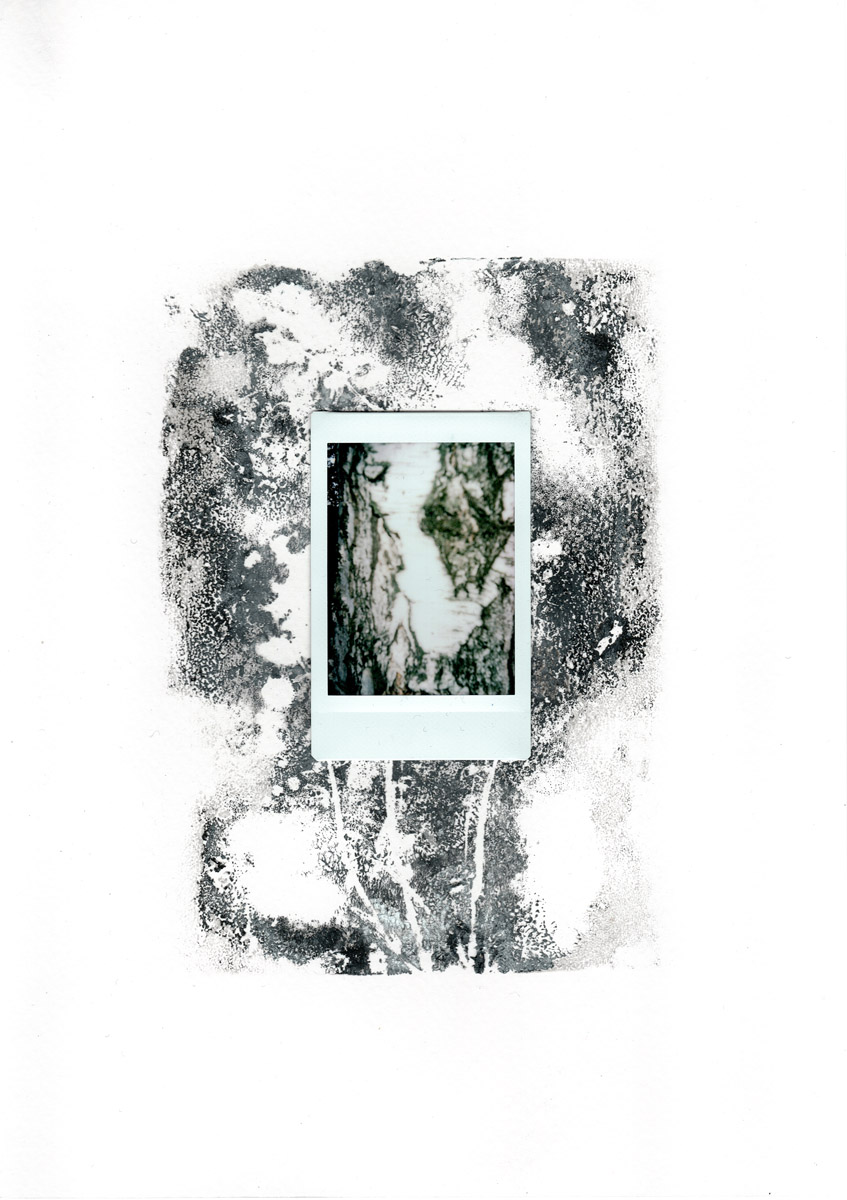
Photo and monotype by Olga Bubich from the project "Memory Landscapes" / / Auschwitz Birkenau / image from the artist's website / 2022-2025
By analogy with Bubich’s work, in The Blue Skies Project, every Polaroid from 1,078 European sites of mass killings depicts nothing but the sky, sometimes with clouds. Yet each image is meticulously marked with the site’s coordinates and the number of victims, typed directly onto the photograph with a typewriter. This strict systematization and dry factuality serve as a terrifying reminder of the catastrophic efficiency of the Nazi machinery of extermination. Instead of showing the landscape, Kusters photographed upward, revealing what usually remains unnoticed. Each of his images became both an archive and a memorial.
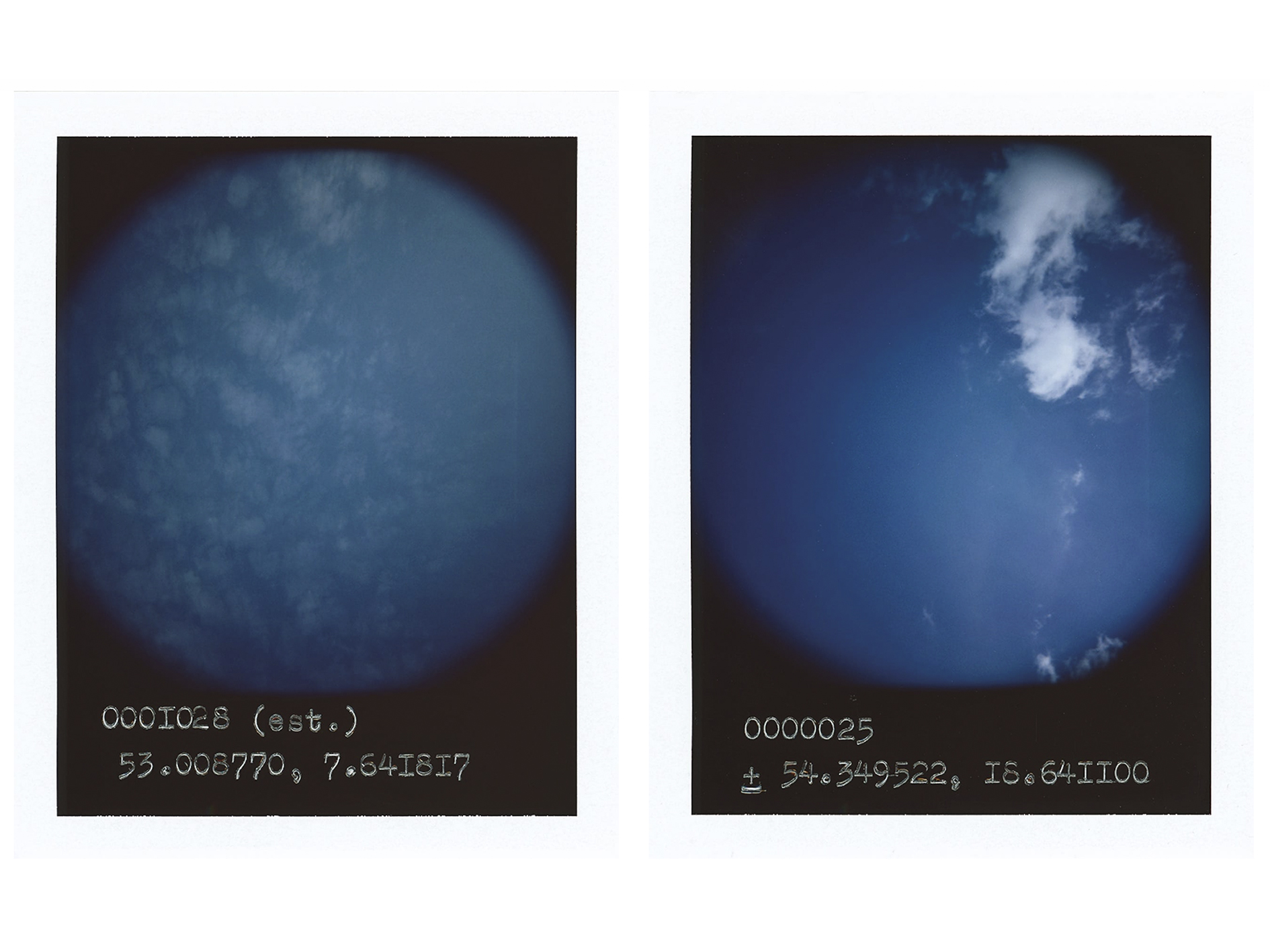
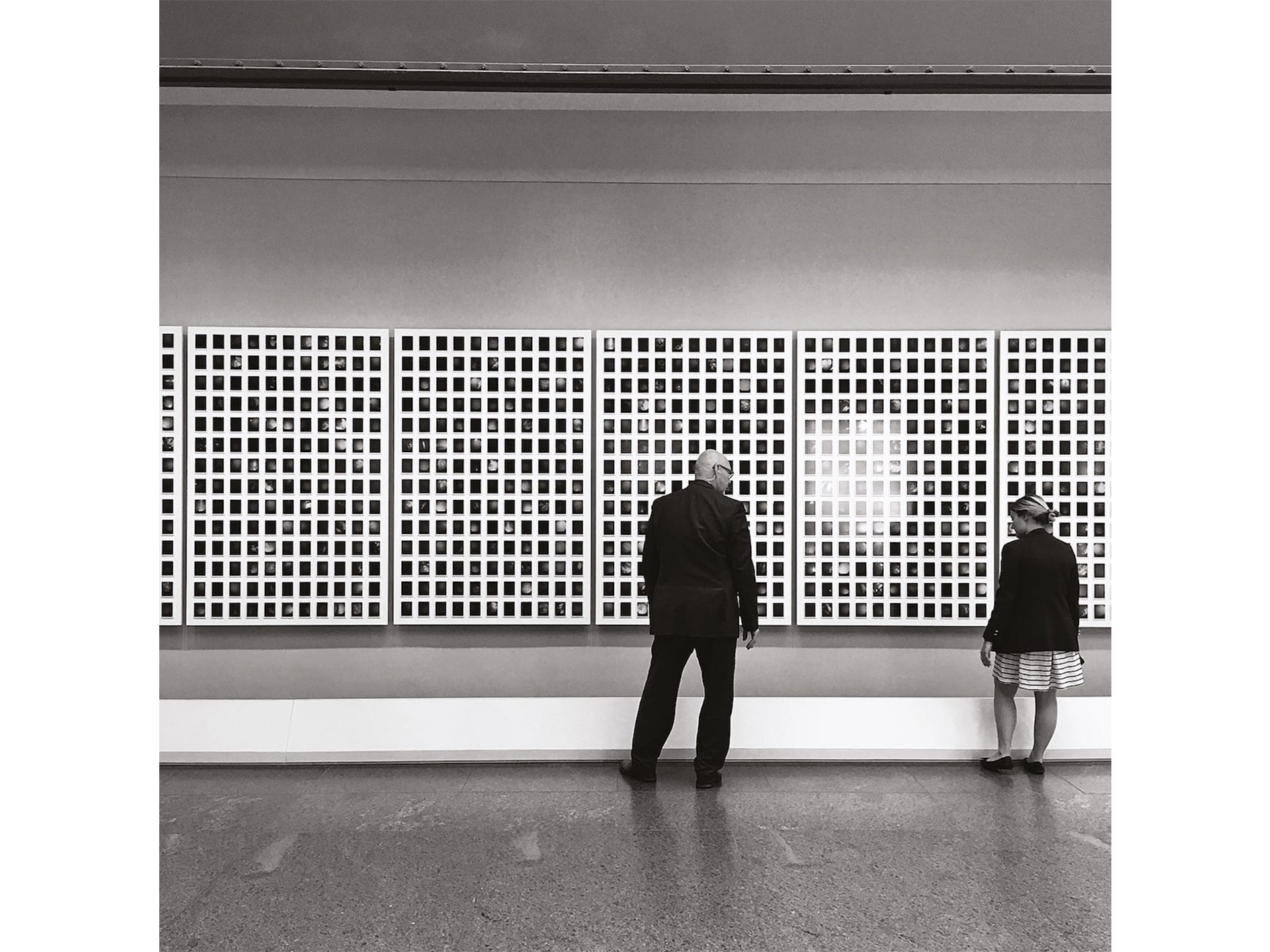
On the first slide: Photos by Anton Kusters from The Blue Skies Project; on the second slide: Part of The Blue Skies Project exhibition at the United States Holocaust Memorial Museum in Washington / both photos taken from the British Journal of Photography website / 2020
Bubich, on the other hand, photographs a tree and declines to comment on it. Why this particular tree, where it is located, what it “saw,” and why it is shown here remain unclear. The pictures resemble fragments of memory, souvenirs from a journey into a restless past, illustrations for an anxious essay. It seems the choice of the Instax instant camera was motivated by its soft aesthetic, which gently muffles even heavy themes. Within the project, it functions as a decorative element without clear conceptual grounding. The result is more akin to a visual mood board of aestheticized fragments set against trauma, with the author’s position seemingly blurred on purpose—to avoid the full weight of the subject, leaning instead on a desire to appear engaged, relevant, and profound. The artist touches the study of traumatic legacy obliquely, almost sidestepping it, creating distance through Instax aesthetics and a dense stream of borrowed references in the textual part.
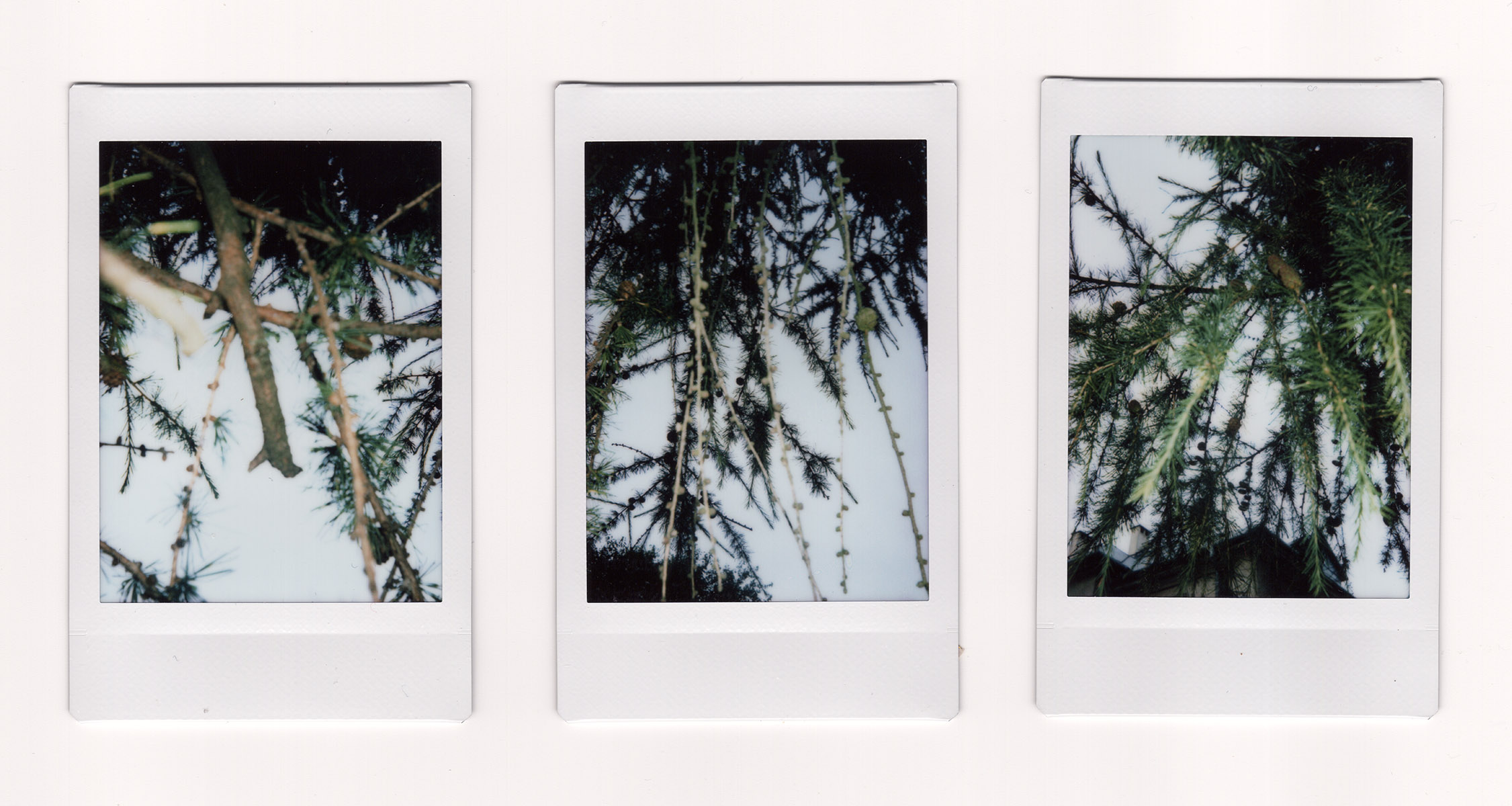
Part of Olga Bubich's photographs from the "Memory Landscapes" project / instant Instax photos and monotypes / author's materials / 2022-2025.
Aesthetics instead of method
In Memory Landscapes, form contradicts research. We do not see a methodology underpinning the stated themes and narrative; the 19 chosen locations (undoubtedly historically significant and heavily charged) appear here only as fragments of a vast traumatic mass. What is more, the project relies on unverifiable abstraction: in the phone-shot videos, only a few sites are identified. The conflict-free, ecological visuals do not correspond to the imagery of concentration camps and, instead of tying the project together, only emphasize the internal disconnect. The dissonance is amplified by the question: how appropriate is private filming for an art project on the territory of camps, where such activity requires special permission?
Video by Olga Bubich from the "Memory Landscapes" project, where the artist's images and recordings were combined with quotes from researchers of nature and memory / direct link to the material from the artist's website and YouTube channel / 2023
Although the project claims to distance itself from institutionalized memory, it nonetheless returns to an oppressive structure, documenting memorial architecture, camp buildings, interiors, and people. Including such documentation could have supported the project’s concept, highlighting a counterpoint to “nature that remembers” through heavy man-made concrete structures. But in Bubich’s case, the videos only distort her central idea, contradict the concept, and raise ethical concerns. The abrupt shift to an additional technical method suggests distrust of her own visual language—a need to “add weight,” a lack of faith that bark and Instax could carry the task.
Within Memory Landscapes, memory is shifted from humans as carriers of recollections to nature, imagined as possessing its own capacity to remember, “beyond the human.” Paradoxically, the project’s visual realization depends on a subjective, human gaze: a limited number of images, shot haphazardly from the first-person perspective, give nature only a conditional role. As local witnesses of trauma, these landscapes are abstracted and universalized in the process of photographing, which erases the complex social and political dimensions of traumatic memory. Pain thus transforms into poetic rhetoric.
The artist also makes no attempt to anchor the photographs to concrete sites, though each is a crucial point in a nightmare-filled landscape (returning us again to Kusters’ example). This becomes especially evident when text and visuals start to compete without generating tension or cohesion: the photographs exist as isolated technical exercises without contextual markers, while the essay functions as a self-sufficient work that almost fences the viewer off from the images. The photographs lack autonomous expression, serving more as illustrations to a heavy text.

Part of Olga Bubich's photographs from the "Memory Landscapes" project / instant Instax photos and monotypes / author's materials / 2022-2025.
A useful comparison here is American artist Sally Mann’s Battlefields, which documents sites of bloody Civil War battles using the 19th-century wet collodion process—the very technique used in the war’s own era. Mann deliberately preserves optical distortions, emulsion defects, dust, and stains, which give her images the visceral texture of corpses. By highlighting these imperfections rather than hiding them, she turns them into powerful metaphors of destruction. Her work does not soothe but unsettles, evoking death, decay, and grief, provoking a strong emotional response in the viewer.
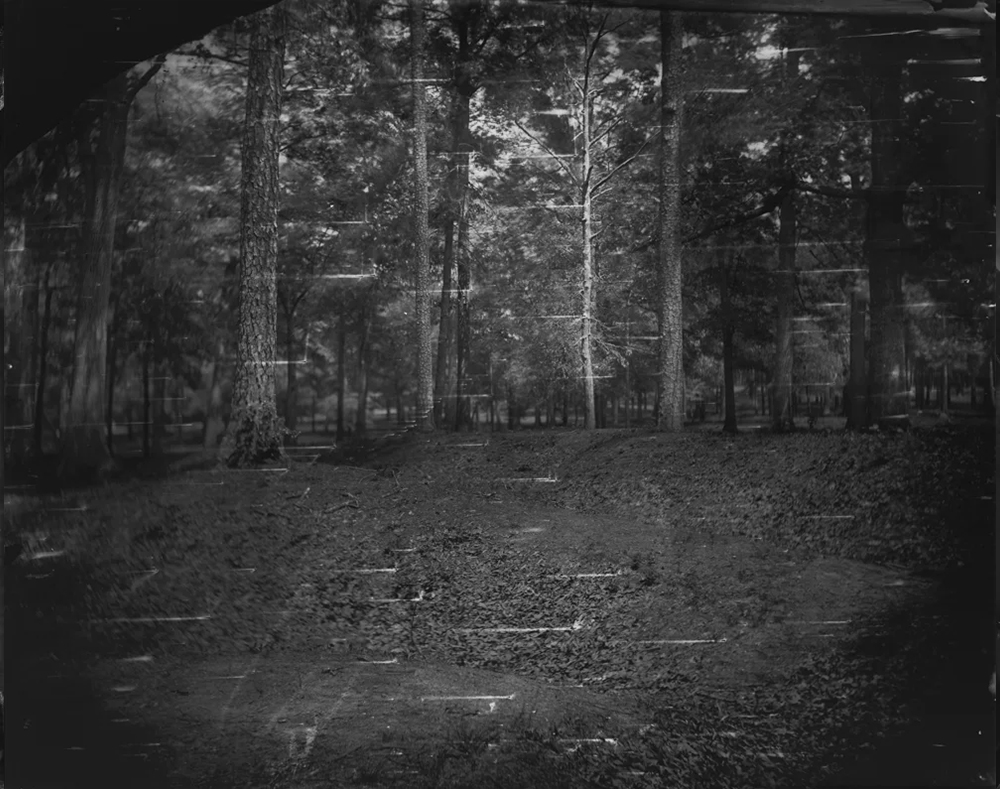
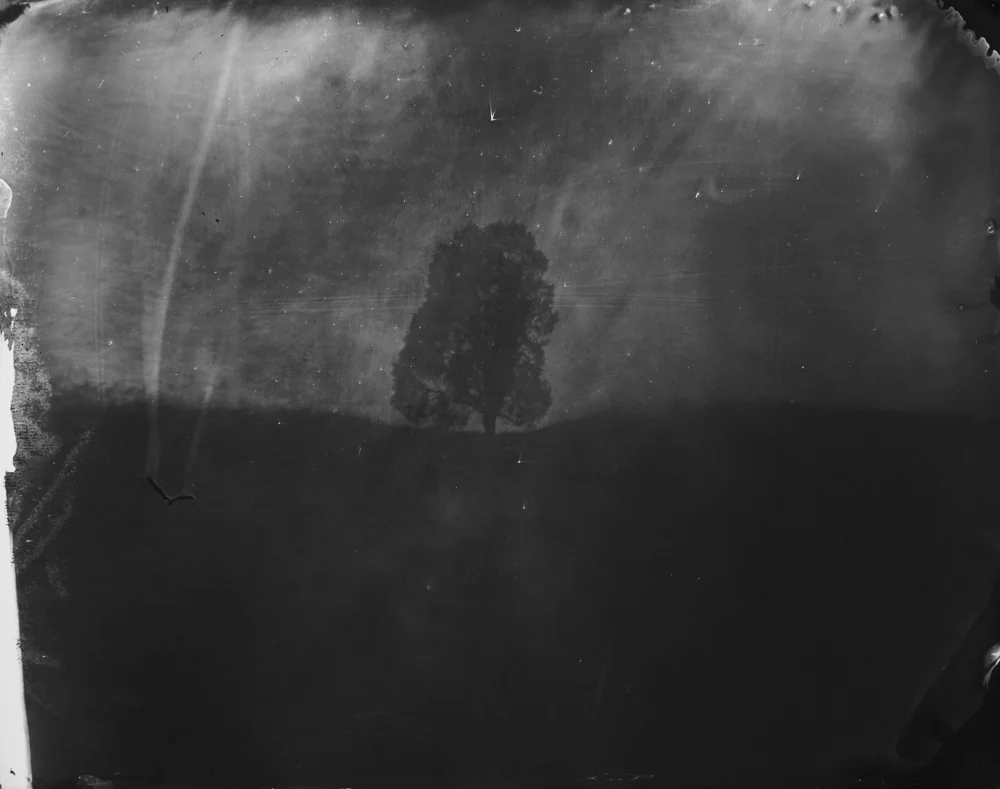
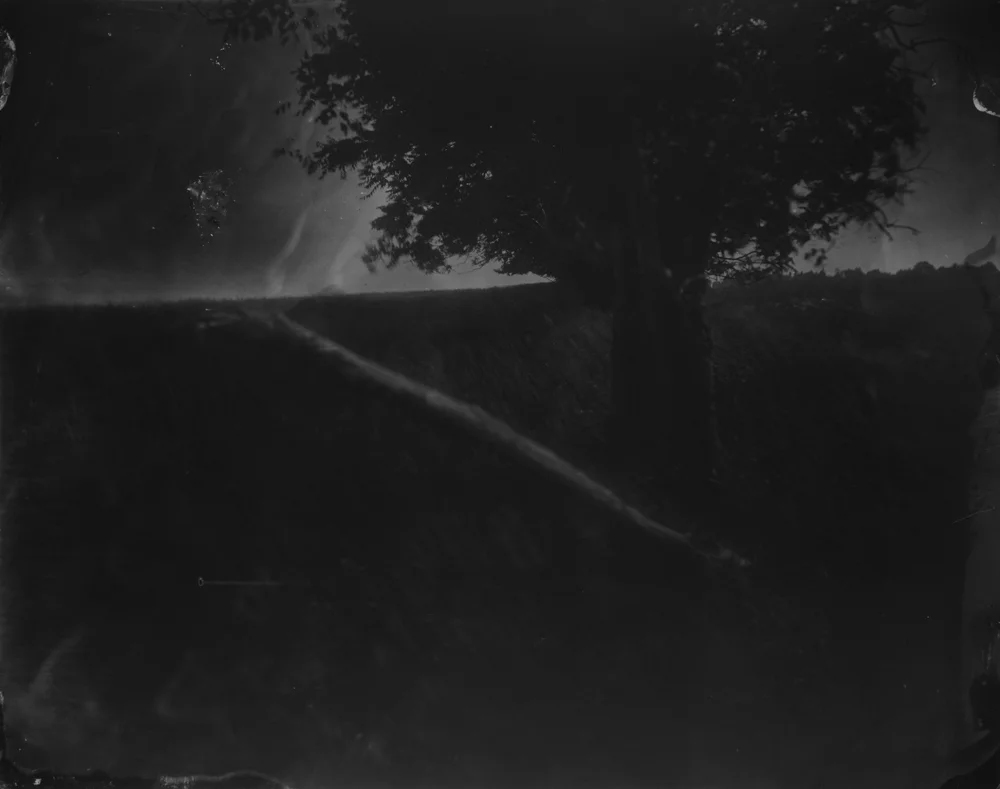
Photograph Cold Harbor (Battle) from the Battlefields project by American photographer Sally Mann / gelatin silver print / National Gallery of Art, Washington / 2003. Image taken from the artist's website www.sallymann.com
Bubich, by contrast, remains on the surface, presenting non-confrontational images of harmless bark, grass, foliage, and stones. Unsupported by medium or concept, they provoke no inner tension, no disturbance, no lasting impression. They soothe. But the memory of traumatic events should not soothe.
Melancholy and impotence
The project might fit into the discourse on memory and trauma as a conceptual sketch referencing postmodern theory—but not as a full-fledged artistic statement. It is not a dialogue but a one-sided presentation, where knowledge is reduced to clever citations and sensibility to dense melancholy.
Melancholy here is not simply sadness or depression, but a complex social condition reflecting the sense of an era’s end, identity crisis, and the impossibility of regaining the lost. The concept is directly linked to historical memory and the ever-present past in the present. Within this frame, Memory Landscapes might claim to be a capacious philosophical essay—a sharp commentary on the paradoxical impossibility of mourning the historical nightmare, distorted today by institutional memory, and a gesture toward nature as an alternative. The project could have ended there, without tripping over itself. Instead, in execution, Memory Landscapes becomes a stylization of monumental subject matter through an ambivalent visual method that gradually dismantles even the weight of the text, leaving the viewer stranded in barren melancholy.
Everything in Memory Landscapes speaks of insecurity, chaos, and a patchwork of fragments that never form a method. The artist does not unite the elements into a coherent statement. She juggles terminology, seemingly unaware which ball will drop. The form is delicate, the content fragmented, the method undefined.
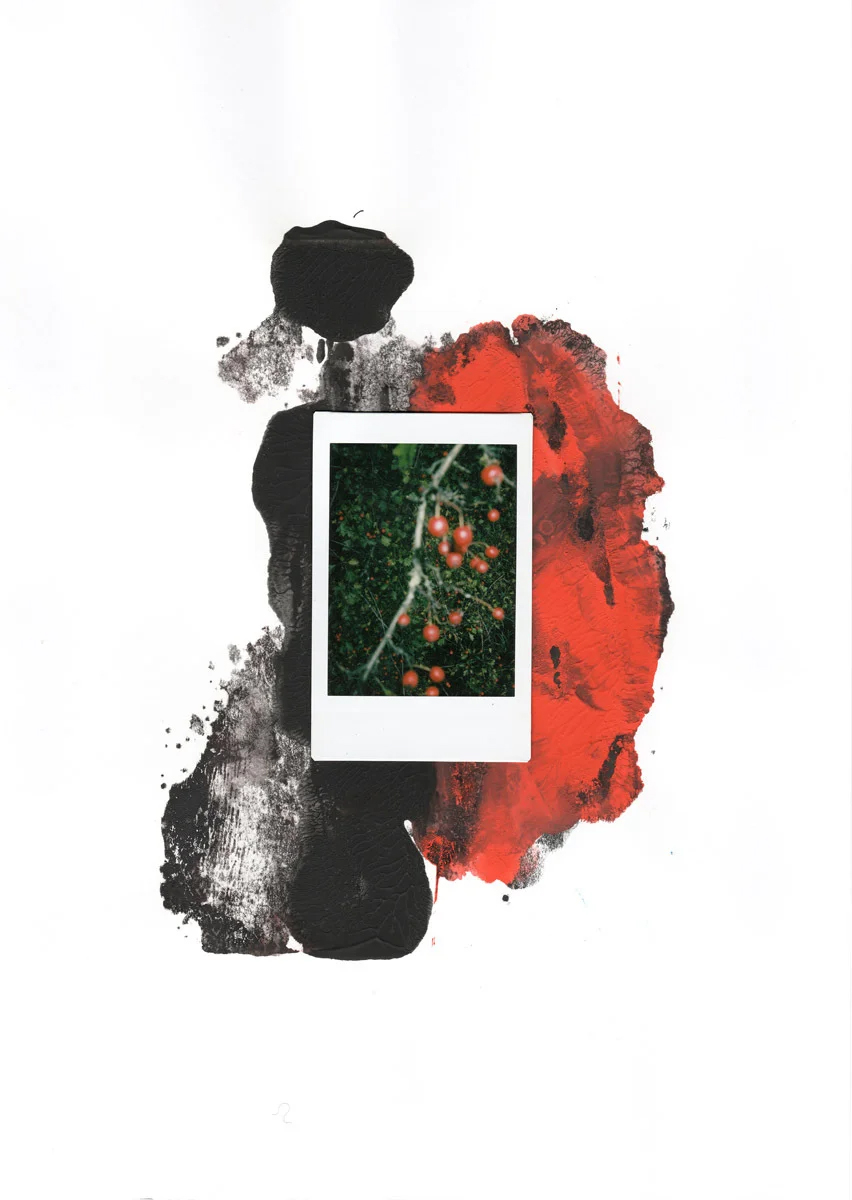
Photo and monotype by Olga Bubich from the project Memory Landscapes / image from the artist's website / 2022-2025
Working with memory is always working with material that is already overloaded with meaning: historical, visual, political. Therefore, any visual solutions in such a context require a clear position and understanding of how form relates to content. In the project Memory Landscapes, Bubich creates the impression of an interdisciplinary study, touching on the themes of nature, memory, and collective trauma. However, despite its visual appeal, the project is reduced to superficial imitation, as the artist tries to approach a complex topic through aesthetics, without having a clear methodological approach and critical understanding. Of course, there is no need to use exactly the same tools to improve information as Anton Kusters or Sally Mann did, and one can approach the topic from another side. But the lack of this clear information makes Memory Landscapes more of an impression on the topic that bypasses memory, rather than working with it.
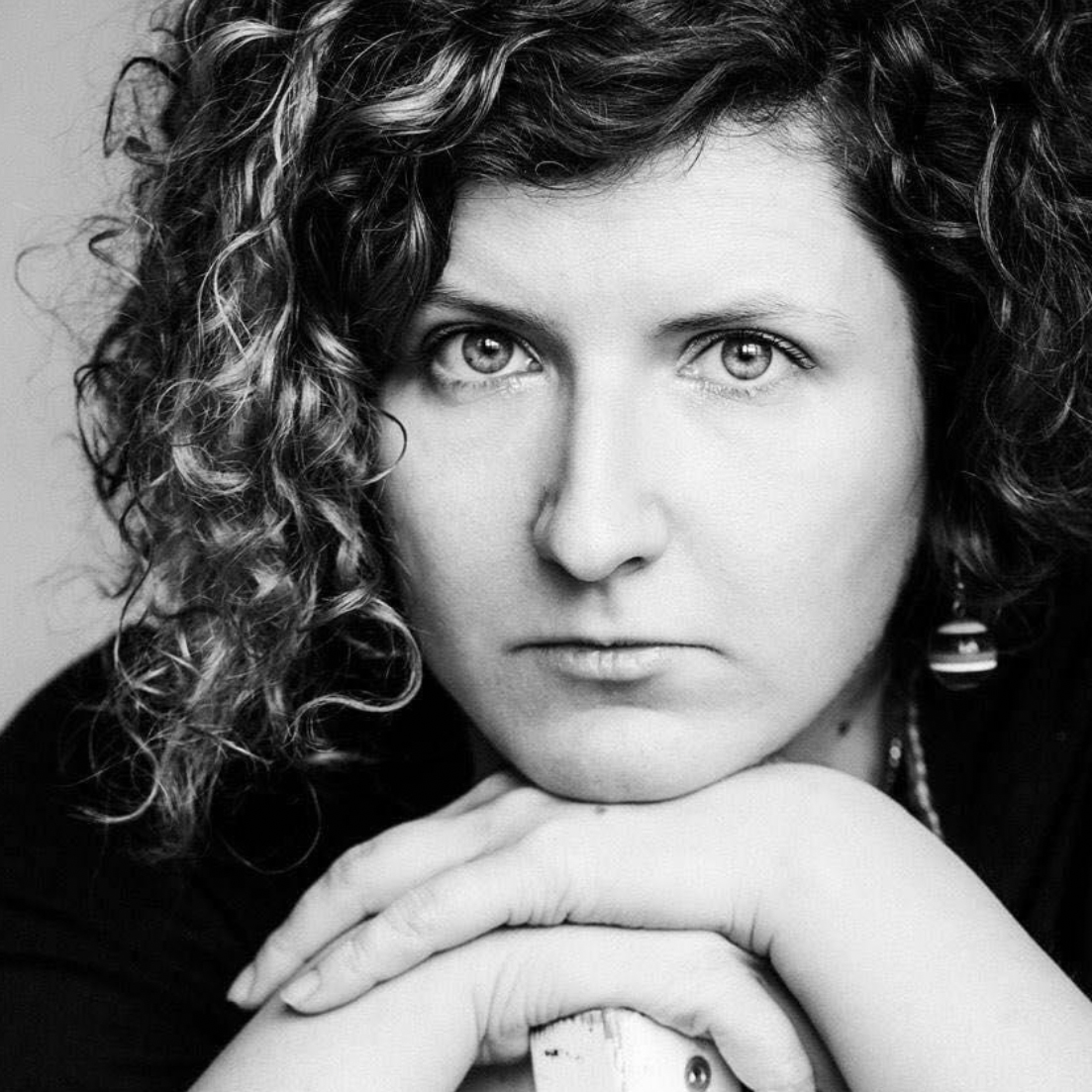
Olga Bubich is essayist, researcher of collective memory and traumatic past, photo critic and photobook reviewer, photographer, and curator with over 15 years of teaching experience, promoting Belarusian photography internationally.
Born in Minsk, she graduated from Minsk State Linguistic University and studied in Perugia, Italy. She trained in the theory and practice of photography at workshops led by Andrei Dubinin (Belarus), Alexei Nikishin (Russia), Claudine Doury (France), Xavier Fernandes-Fuentes (Spain/the Netherlands), Andrey Polikanov, and Tatiana Plotnikova (Russia).
Author of the photobooks The Art of (Not) Forgetting (2021) and Bigger than I (2019), and contributor to History of Belarusian Photography (2019). Her works are held in museum and library collections across Europe, Asia, and the USA. As a curator, she has organized exhibitions in Belarus, Germany, Sweden, Georgia, and beyond.
Перадрук матэрыялу або фрагментаў матэрыялу магчымы толькі з пісьмовага дазволу рэдакцыі.
Калі вы заўважылі памылку ці жадаеце прапанаваць дадатак да апублікаваных матэрыялаў, просім паведаміць нам.
Olga Bubich is essayist, researcher of collective memory and traumatic past, photo critic and photobook reviewer, photographer, and curator with over 15 years of teaching experience, promoting Belarusian photography internationally.
Born in Minsk, she graduated from Minsk State Linguistic University and studied in Perugia, Italy. She trained in the theory and practice of photography at workshops led by Andrei Dubinin (Belarus), Alexei Nikishin (Russia), Claudine Doury (France), Xavier Fernandes-Fuentes (Spain/the Netherlands), Andrey Polikanov, and Tatiana Plotnikova (Russia).
Author of the photobooks The Art of (Not) Forgetting (2021) and Bigger than I (2019), and contributor to History of Belarusian Photography (2019). Her works are held in museum and library collections across Europe, Asia, and the USA. As a curator, she has organized exhibitions in Belarus, Germany, Sweden, Georgia, and beyond.
Перадрук матэрыялу або фрагментаў матэрыялу магчымы толькі з пісьмовага дазволу рэдакцыі.
Калі вы заўважылі памылку ці жадаеце прапанаваць дадатак да апублікаваных матэрыялаў, просім паведаміць нам.
SHARE:
SHARE:
Чытаць таксама:

FOLLOW US
INSTAGRAM TELEGRAM TIKTOK FACEBOOK YOUTUBE
© Chrysalis Mag, 2018-2025
Reprinting of materials or fragments of materials
is allowed only with the written permission


